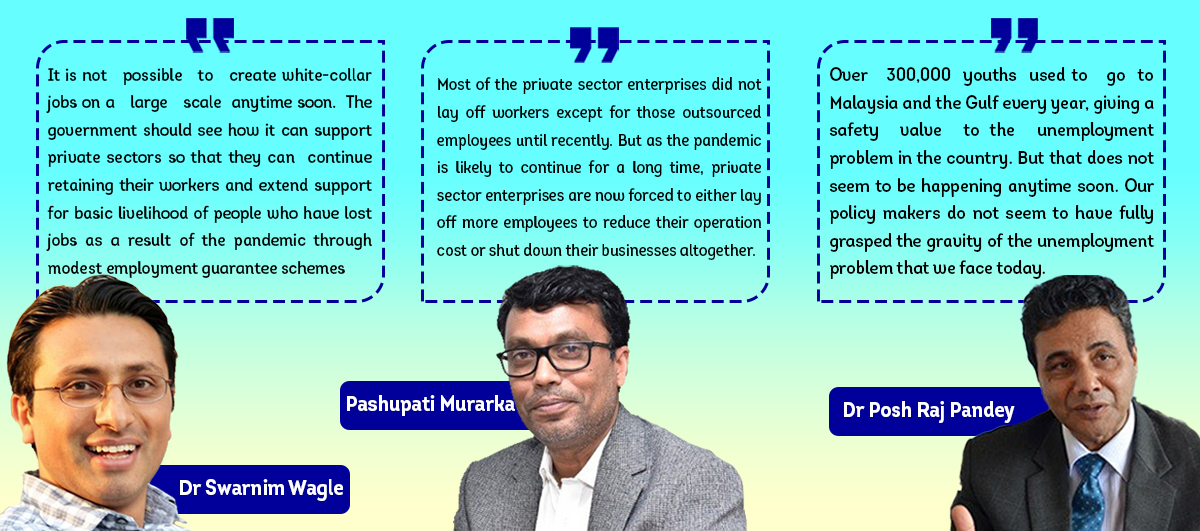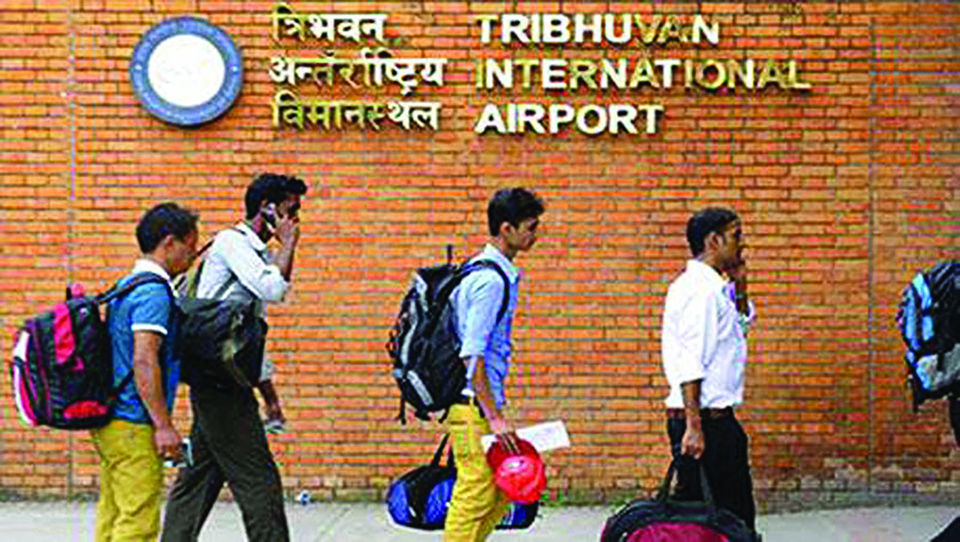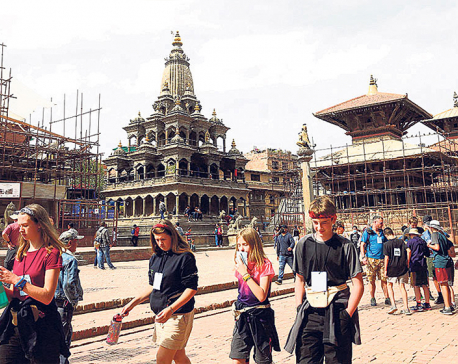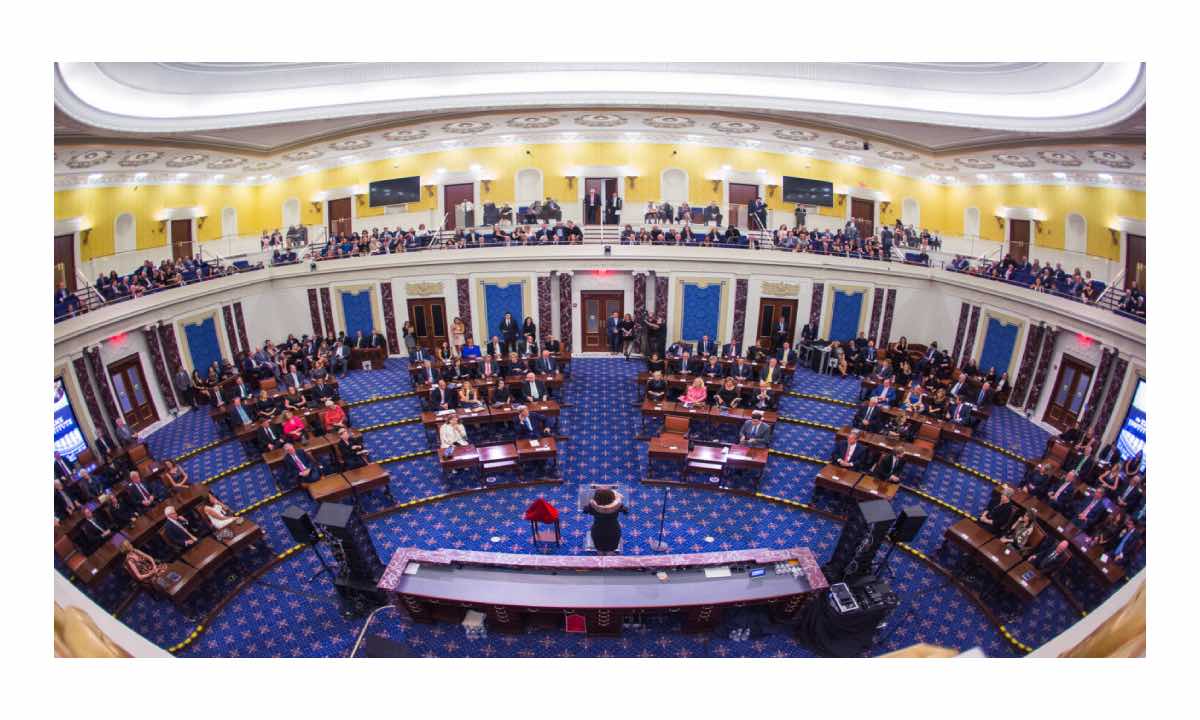
OR
#Saving Jobs and Businesses
COVID-19 pandemic has devastated the economy. But there is still time to save it from total collapse
Published On: September 22, 2020 09:10 AM NPT By: Kosh Raj Koirala | @KoshRKoirala

KATHMANDU, Sept 22: Dhan Bahadur Shah of Kailali opened an eatery in Kalanki area. But, less than two months after he started the business, the COVID-19 pandemic forced him to close the place in March.
Shah's house owner waived the rent of his business outlet for two months, and the landlord reduced the rent by 50 percent to Rs 10,000 a month for the next few months. "But it is still difficult to pay the rent and meet other family expenses when your business is shut down," said Shah, venting out his frustration.
What has worried Shah is the uncertainty. Once Kathmandu returns to normalcy, he hopes to settle the debt taken to start his business. "It is still uncertain when things will be normal. I will have no other option than selling the restaurant and returning home to Kailali," he further said.
Shah is just a case in point. Tens of thousands of small entrepreneurs, daily wage earners and those involved in the informal as well as formal sectors face uncertainty as the pandemic has taken a heavy toll on the country’s economic spheres. Three in every five employees in both formal and informal micro, small and medium enterprises (MSMEs) have lost their jobs as a result of the pandemic, according to a study commissioned by the United Nations Development Program (UNDP) in Nepal.
The study conducted by the Institute for Integrated Development Studies (IIDS) earlier in May revealed that the MSMEs across Nepal have seen upto 95 percent decline in average monthly revenue and that they can barely sustain for the next two months in the absence of external support measures, if some lockdown measures are further extended.
The estimates, experts say, are also incomplete reflections of how the pandemic has devastated the economy. While those still employed are facing pay cuts, tens of thousands of others working in the informal sector, which is also adversely affected by the pandemic, are unaccounted for. Nepal’s informal sector alone employs around 62 percent of its total labor force, nearly 4.4 million people.
In addition to the tourism sector that employs over 500,000 people, transport, agriculture, forestry, fisheries, retail and wholesale business, automobile workshops, manufacturing, construction and education sectors provide a large number of job opportunities in Nepal. While the tourism sector has shown no sign of immediate recovery, and other sectors remain heavily impacted, joblessness is likely to worsen further in the days to come as thousands of Nepali migrant workers are returning home.
Some 73,000 Nepali migrant workers have already returned home, mainly from the Gulf and Malaysia as the fifth phase of repatriation flights is currently underway. A Rapid Assessment of the Situation of Nepali migrant workers during the COVID-19 pandemic, conducted jointly by Nepal Policy Institute (NPI) and Migration Lab (MLab), showed that an overwhelming majority of Nepali migrant workers in Malaysia and Gulf countries intend to return home as uncertainty over their employment looms large amid the worsening situation of COVID-19 pandemic. The Ministry of Labor, Employment and Social Security earlier estimated that the number of returnees could go well over a million if the COVID-19 situation does not see any improvement.
Further, some 300,000 of around 500,000 Nepali migrant workers in India are estimated to have already returned home since the outbreak of COVID-19 in March, and the rest are also likely to return. Although a few hundred Nepali migrant workers reportedly returned to India, there are apprehensions that more migrant workers could return home from India as the COVID-19 situation is getting worse across India in recent days.

From bad to worse
Nepal’s unemployment rate was already high with an estimated 11.4 percent jobless, according to a Nepal Labor Force Survey 2018/19 unveiled by the Central Bureau of Statistics in April, 2019. Of the total 7.08 million work force in the job market, around 908,000 people are completely jobless.
What makes the unemployment situation worse is that nearly 500,000 youths enter the job market every year. “Over 300,000 youths used to go to Malaysia and the Gulf every year, giving a safety valve to the unemployment problem in the country. But that does not seem to be happening anytime soon. Our policy makers do not seem to have fully grasped the gravity of the unemployment problem that we face today,” said Dr Posh Raj Pandey, an economist and a former member of National Planning Commission (NPC).
According to an estimate by the International Labor Organization (ILO), some 2.5 million jobs are required in Nepal if the COVID-19 pandemic continues ravaging economies both in labor destinations and at home. “Even under extremely favorable conditions in the midst of this COVID-19 pandemic, we will need to create at least 1.2 million jobs now,” said Dr Pandey, who is also the chairman at South Asia Watch on Trade Economics and Environment (SAWTEE), a Kathmandu-based regional think-tank.
Government statistics show that around 3.4 million people are employed in 922,000 registered private sector enterprises. The situation of employment at home looks alarming as a study conducted by Nepal Rastra Bank in July showed that some 22 percent of people employed in the industrial sector have already lost their jobs. With no external support, most MSMEs have already started further laying-off their workers.
Govt efforts to tackle joblessness
Anticipating the chronic problem of unemployment, the government in its annual budget for the fiscal year 2020/2021 announced a number of programs to create at least 700,000 jobs in the domestic market. The programs include the Prime Minister Employment Program, technical, vocational and skill-oriented training, self-employment, Youth and Small Entrepreneur Self-Employment Fund and others to promote forest-based industries, agriculture and micro and small industries.
The promise to create 700,000 jobs in itself is a herculean task, the gap between the available job opportunities and the number of unemployed will still be huge.
Immediate past president of the Federation of Nepalese Chambers of Commerce and Industry (FNCCI), Pashupati Murarka said private sector enterprises are forced to further lay off their workers as the COVID-19 pandemic does not seem to go away anytime soon. "Most of the private sector enterprises did not lay off workers except for those outsourced employees until recently. But as the pandemic is likely to continue for a long time, private sector enterprises are now forced to either lay off more employees to reduce their operation cost or shut down their businesses altogether," said Murarka.
The private sector believes that the situation could worsen if the government fails to create an environment conducive to survive this pandemic through various policy and support measures. "The private sector not only provides jobs to hundreds of thousands of people, but also acts as a major source of the government's revenue. The government's inaction to help the private sector survive this pandemic could harm the government both ways," Murarka added.
Protecting and creating jobs
Although the government has prioritized creating jobs through different measures, experts are less optimistic that any such attempts would yield results. The best strategy of the government, they say, should be to help private sector enterprises retain their employees so that the problem of joblessness is not exacerbated.
"It is not possible to create white-collar jobs on a large scale anytime soon. The government should see how it can support private sectors so that they can continue retaining their workers and extend support for basic livelihood of people who have lost jobs as a result of the pandemic through modest employment guarantee schemes," argued Dr Swarnim Wagle, former Vice-chairman of NPC.
Experts say any such employment guarantee programs could be utilized to impart new skills and training to the unemployed so that they could be self-employed or explore employment opportunities in the market.
The World Bank, in its twice-a-year regional updates in April, said the impact of the pandemic will hit the low-income people hard, especially the informal workers in hospitality, retail trade and transport sectors who have limited or no access to health care and social safety nets. Establishing temporary work programs for the unemployed migrant workers and enhancing debt relief measures for businesses and individuals are some of the suggestions made by the report to help minimize the short-term economic pain caused by the pandemic.
Experts say any support measures extended by the government as well as others should also take into consideration the 'missing middle' as experiences in the past of different countries, including Nepal, suggest that people belonging to the middle and lower middle income brackets are often excluded.
While those financially well-off are least affected by the pandemic of this nature, those considered economically poor also tend to get various kinds of support from the government as well as other sectors. "Who are often left out are those belonging to middle-income class people. Since middle class people who are otherwise not counted as recipients of government support measures are equally impacted by the pandemic, any support measures especially on the part of the government should take due consideration of these people," argued Dr Wagle.
A number of countries with almost similar situation such as Vietnam, Thailand and Fiji have taken a number of policy and support measures, such as refinancing facilities to facilitate credit to SMEs and mitigate the negative effects of COVID-19 shocks, targeted job retention program to support firms and employment in the country, direct compensation to the MSMES to save jobs and support livelihoods of people who are hard hit by the pandemic. They have also chosen to massively expand social protection measures, such as conditional and unconditional cash transfer for subsistence, waiver or postponement of utility and financial obligation, universal one-off cash, childcare support and social pension.
Dr Wagle, who also heads IIDS, a Kathmandu-based think-tank, said Nepal should also learn from the best practices of other countries to save the existing jobs and support the livelihoods of people who are badly hit by the pandemic. "While generating new job opportunities should be the long-term goal, as this is not happening anytime soon, the immediate priority of the government should be to introduce social protection measures to support the livelihood of the people,” he added.
You May Like This

COVID- 19 and Nepali Tourism Industry
Nepal needs to start thinking about post-COVID tourism strategies as a country with considerable dependence on tourism income. ... Read More...

Thamel on the brink of total collapse
More than 200 businesses have already left Thamel ... Read More...
_20220205164214.jpg)
Students of 12-17 age group receiving vaccination against COVID-19 (With Photos)
KATHMANDU, Feb 5: School students from 12 to 17 years old age group receiving vaccine against COVID-19 at Saraswati secondary... Read More...





Just In
- Political party leaders express commitment to ensure consensus to promote investment in the country
- Ilam by-election update: UML's Nembang continues to lead in vote count
- Demystifying labeled Feminism
- Japanese Foreign Minister to visit Nepal next week
- Bajhang by-election update: NC candidate ahead by 249 votes
- Aid for war: On the United States Senate and aid package
- NEA Provincial Office initiates contract termination process with six companies
- Nepal's ready-made garment exports soar to over 9 billion rupees













Leave A Comment